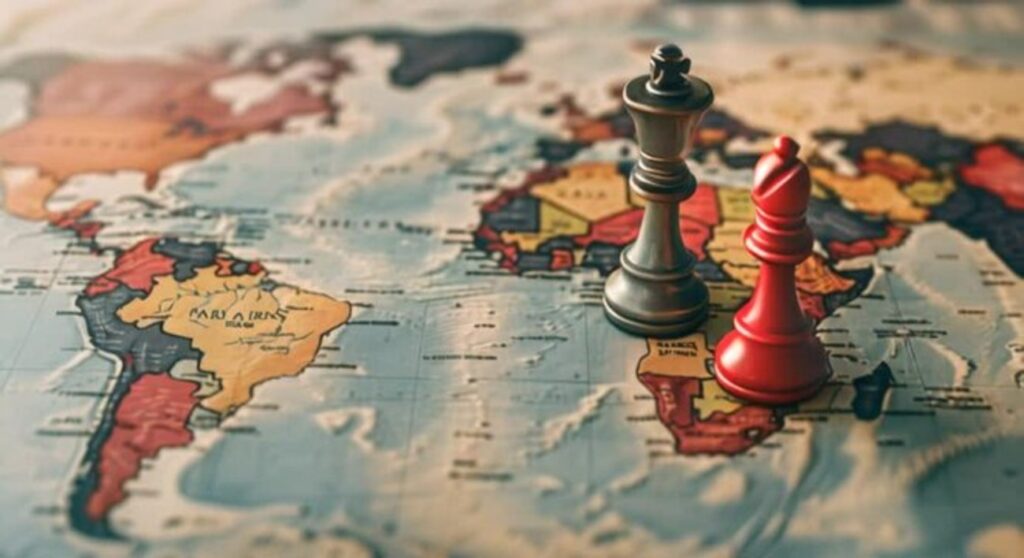From the mountains of the South Caucasus to the deserts of Balochistan, conflicts worldwide are shaped by distinct histories and geographies. Yet, when examined closely, a common thread emerges: struggles over nationalism, ethnicity, culture, and economics, often manifesting in the form of control over resources, trade routes, or access to opportunities. These dimensions manifest differently in each society, sometimes promoting solidarity and resilience, but at other times deepening divisions and prolonging conflict. Increasingly, such conflicts no longer remain contained within national borders; they grow into regional and global struggles, shaped by politics, trade, and ideology.
While the Israel–Palestine and Russia–Ukraine conflicts dominate headlines, many lesser-known disputes across regions, such as the South Caucasus, Central Africa, Southeast Asia, and South Asia, reveal similar dynamics. In this context, U.S. President Donald Trump, during his second tenure, sought to portray himself as a chief negotiator of global conflicts, often linking peace-making with economic and trade leverage. He repeatedly presented himself as an international peacemaker, even suggesting that he was a contender for the Nobel Peace Prize. He claims to have resolved eight conflicts so far, between Armenia and Azerbaijan, the Democratic Republic of Congo and Rwanda, Iran and Israel, India and Pakistan, Cambodia and Thailand, Ethiopia and Egypt, Serbia and Kosovo, and Israel and Palestine. Meanwhile, other major powers, including Russia and China, continue to pursue their own strategic interests within these disputes.

This article examines three of these lesser-known conflicts in detail, along with one additional case that Trump did not claim to have resolved but still remains important to discuss. It highlights the core causes of each conflict, the main actors involved, and the strategic interests of major global powers.
To begin, the South Caucasus, a geographical region on the border of Eastern Europe and West Asia, offers a clear example of how nationalism, culture, and economic interests influence conflicts. Armenia and Azerbaijan have been locked in a century-long struggle over Nagorno-Karabakh, a mountainous enclave officially recognised as part of Azerbaijan but historically populated by Armenians.
For Armenians, who follow Christianity, Nagorno-Karabakh represents an ancestral homeland and a symbol of cultural survival; for Azeris, who are Muslims, it embodies sovereignty and national integrity. Over nearly four decades, repeated conflicts have claimed tens of thousands of lives and displaced many more.
Both countries became part of the Soviet Union in the 1920s, which temporarily muted these tensions under centralised control. However, with the collapse of the USSR in the early 1990s and the emergence of independent nation-states, long-suppressed grievances resurfaced. The result was the First Nagorno-Karabakh War, during which Armenian forces not only seized Nagorno-Karabakh but also occupied surrounding Azerbaijani territories, leading to the displacement of hundreds of thousands of Azeris.
In 2020, the Second Nagorno-Karabakh War broke out, during which Azerbaijan launched a successful military campaign and regained much of the territory, including the key city of Shusha. Just three years later, in 2023, Azerbaijan initiated another military offensive. Although Nagorno-Karabakh was internationally recognised as part of Azerbaijan, it remained governed and populated by ethnic Armenians until the 2023 offensive. The assault, combined with a nine-month blockade, forced nearly 1,20,000 Armenians, the region’s entire Armenian population, to flee by September 2023, paving the way for Azeri forces to capture the entire region.
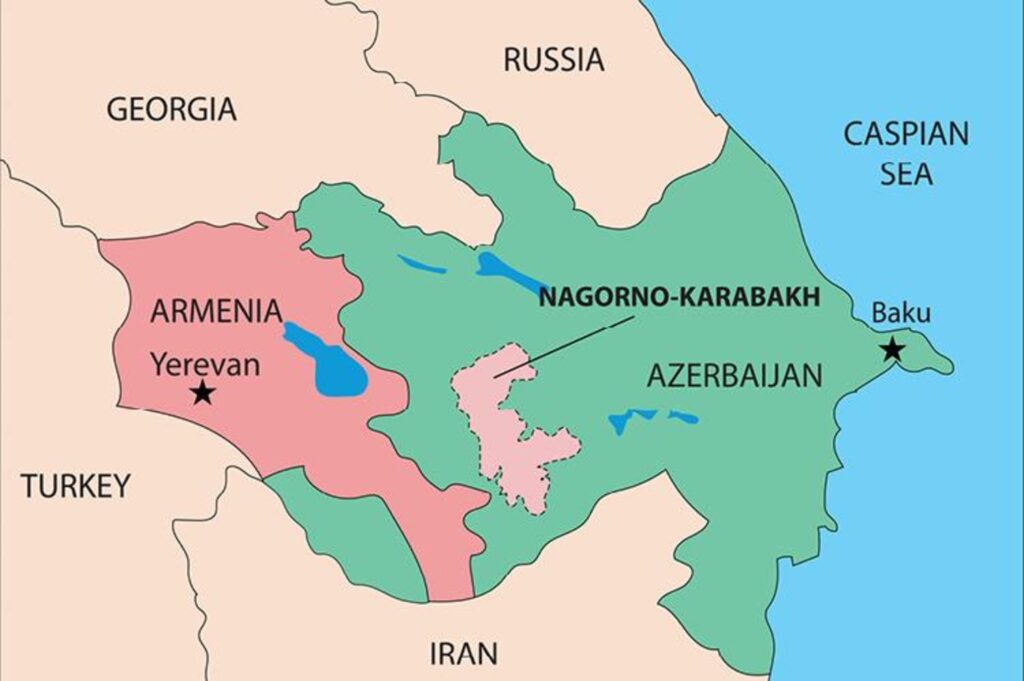
Big powers also have stakes in this issue. Turkey strongly supports Azerbaijan due to shared cultural and linguistic ties – the Azeris are Turkic-speaking, and both countries often describe themselves as “one nation, two states.” Azerbaijan is rich in oil and gas, which account for 90% of its exports, and Turkey is its prime importer. Russia, meanwhile, maintains leverage in the region by supplying weapons to both Armenia and Azerbaijan. In August 2025, the United States stepped in to broker a three-way peace agreement aimed at ending the long-standing conflict. As part of the deal, Washington secured exclusive developmental rights to a new transport corridor, dubbed the “Trump Route for International Peace and Prosperity”, effectively replacing the earlier Zangezur Corridor plan.
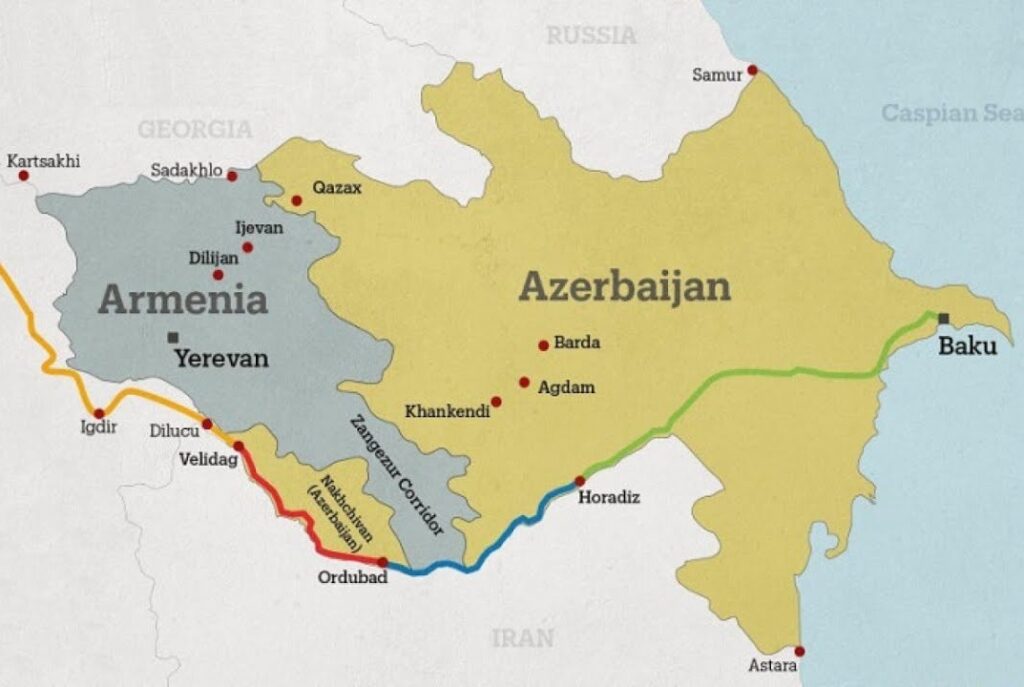
The U.S. also signed bilateral agreements with both Armenia and Azerbaijan to strengthen cooperation in energy, trade, and emerging technologies, including artificial intelligence. This growing American presence in the South Caucasus poses a direct challenge to Russia, as well as to Iran, which lies to the south of the region and has recently deepened its support for Armenia through agreements on transportation, logistics, and revised freight tariffs.
Moving from the South Caucasus to Central Africa, the mineral-rich eastern region of the Democratic Republic of Congo (DRC) has long been a site of conflict involving Rwanda. The major ethnic groups in Rwanda are the Hutu and the Tutsi. Historically, social differences between them were profound, manifested through the system of patron-client ties, through which the Tutsi, with a strong pastoralist tradition, gained social, economic, and political ascendancy over the primarily agricultural Hutu population. During colonial rule, Germany and later Belgium strengthened Tutsi dominance while sowing long-term ethnic tensions. Following independence, Hutu uprisings and coups between 1959 and 1961 displaced or killed thousands of Tutsi, leading to periodic violence in the subsequent decades.

The Rwandan genocide of 1994 saw extremists from the Hutu majority kill more than 800,000 civilians, primarily Tutsi, but also moderate Hutu, in a campaign marked by extreme violence and widespread sexual assault. The genocide ended when the Tutsi-led Rwandan Patriotic Front took control of the capital, Kigali. Afterwards, hundreds of thousands of Hutus fled to the DRC, carrying anti-Rwandan and anti-Tutsi sentiments. This animosity led to two consecutive wars in the region, collectively referred to as the Congo Wars. Although a peace treaty was signed, it failed to bring stability, particularly in eastern DRC.
More recently, the March 23 Movement (M23), a Rwandan-backed Congolese rebel group, has gained territory in the Democratic Republic of Congo (DRC) under the stated objective of eliminating Hutu extremist elements, thereby perpetuating the cycle of ethnic and political conflict. Beyond political control, eastern DRC has long been contested for its rich natural resources, which continue to fuel violence. Minerals such as gold, cobalt, copper, and coltan are exploited by M23, providing a major source of revenue for both the group and Rwanda.
Although several peace negotiations were attempted, most failed, partly because Rwanda has cultivated strong ties with Western countries, which are reluctant to confront Kigali. In June 2025, however, a U.S.-mediated agreement between Rwanda and the DRC raised hopes of ending the fighting. The deal is particularly significant to the US, given that the DRC is by far the world’s largest producer of cobalt, an essential element for manufacturing electric vehicle batteries. The agreement grants the U.S. access to substantial mineral rights in the DRC, securing resources critical to global technology supply chains, while simultaneously aiming to counter China, which has established strong footholds in the mining industry of Congo’s copper belt.
Shifting focus to Southeast Asia, few countries share as much culturally as Thailand and Cambodia. As neighbours, both are predominantly Theravada Buddhists, with 93% of Thai people and 95% of Cambodians adhering to this faith. They also share the national mantra of “nation-religion-king,” along with similar social norms, culinary traditions, and socio-ethnic features. Their languages are written in scripts with a common origin. However, these cultural similarities have historically fueled conflict as much as they have fostered cooperation.
The border disputes between Thailand and Cambodia date back more than a century, beginning during the French occupation of Cambodia. France delineated the boundaries separating the kingdom from Siam (modern-day Thailand), creating an 817-kilometre frontier that cut through dense jungles and the remnants of the ancient Khmer Empire. However, these boundaries were never fully accepted by Thailand. The main conflict centres around a cluster of temples, most notably Ta Muen Thom and Preah Vihear. France drew up maps placing these temples inside Cambodian territory, which became a major source of contention. In 1962, the International Court of Justice (ICJ) ruled in Cambodia’s favour and ordered Thailand to withdraw its troops from the site.
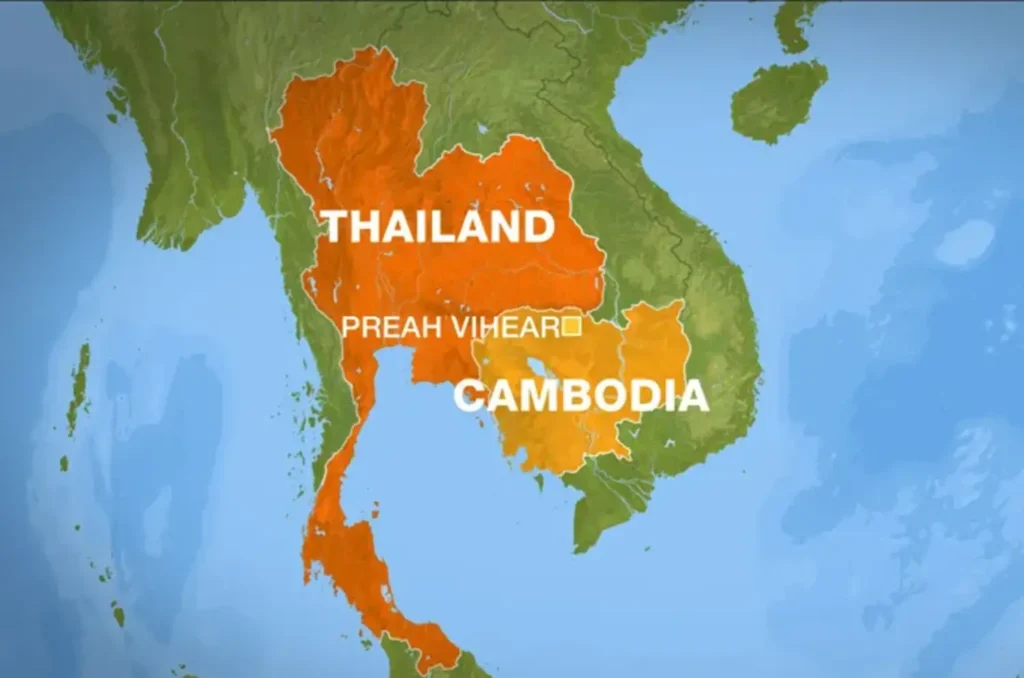
Tensions resurfaced in 2008 when Cambodia sought to register the Preah Vihear Temple, an 11th-century Hindu temple located on the border, as a UNESCO World Heritage Site. This move provoked strong protests from Thailand, which claimed that the surrounding land belonged to it. Between 2008 and 2011, the dispute escalated into a series of violent clashes.
On May 28, 2025, a skirmish near the Temple of Preah Vihear left a Cambodian soldier dead, with both sides blaming each other for initiating the violence. The incident triggered months of tension and retaliation. Thai Prime Minister Paetongtarn Shinawatra was suspended from office after a leaked June 15 phone call with Cambodian leader Hun Sen in which she referred to the Thai military as the “opposite side” and addressed Hun Sen as “uncle.” Critics argued that her comments undermined national unity and showed deference to a rival leader. Protests erupted, leading to her suspension by the Constitutional Court.
After a landmine explosion on July 23 in one of the disputed areas injured five Thai soldiers, including one who lost a leg, this prompted Thailand to launch airstrikes against Cambodia, and Cambodia retaliated. The clashes along the border between the two countries left at least 15 people dead, mostly civilians.
Southeast Asia is a strategically vital region for the United States, where it competes with China to expand and strengthen its diplomatic and military influence. Following the outbreak of conflict, President Donald Trump threatened to block trade deals, warning that exports to the American market would face tariffs of up to 36% starting August 1 unless the fighting stopped. Both Thailand and Cambodia maintain significant trade surpluses with the U.S.; however, Cambodia has increasingly aligned itself with Beijing by adopting China’s Belt and Road Initiative (BRI), which has sparked an economic and infrastructure boom in the country. Thailand, on the other hand, is a U.S. treaty ally and a designated major non-NATO ally, a status that offers it special benefits and decades of American support for its weapons programmes. Any tensions in the region are likely to provoke U.S. intervention. Recently, Washington helped broker a ceasefire between the two nations and, soon after, announced a reduction of tariffs on Cambodia and Thailand to 19%, a move aimed at demonstrating its dominance and influence in the region.
Further west, in South Asia, Balochistan stands out as a region where local grievances and foreign economic interests have combined to fuel violent insurgencies. It is Pakistan’s largest province by area and also the most sparsely populated, spanning nearly 44% of the country’s territory, yet home to only about 14.8 million people. The Baloch, a Sunni Muslim ethnic group, inhabit both sides of the Iran-Pakistan border and parts of southern Afghanistan. For decades, demands for autonomy or independence have been met with violent suppression on both sides of the border. In Pakistan, such movements are often perceived as threats to national unity, while in Iran, the issue is further complicated by the fact that the Baloch are a Sunni Muslim minority within a predominantly Shiite state.
The roots of contemporary unrest trace back to 1948, when the State of Kalat, now part of Balochistan, was forcibly incorporated into Pakistan despite local resistance. Since then, phases of resistance unfolded through the 1950s, 1960s, and 1970s. After a relatively quiet period, insurgent activities re-emerged strongly in the early 2000s during Gen. Pervez Musharraf’s rule.
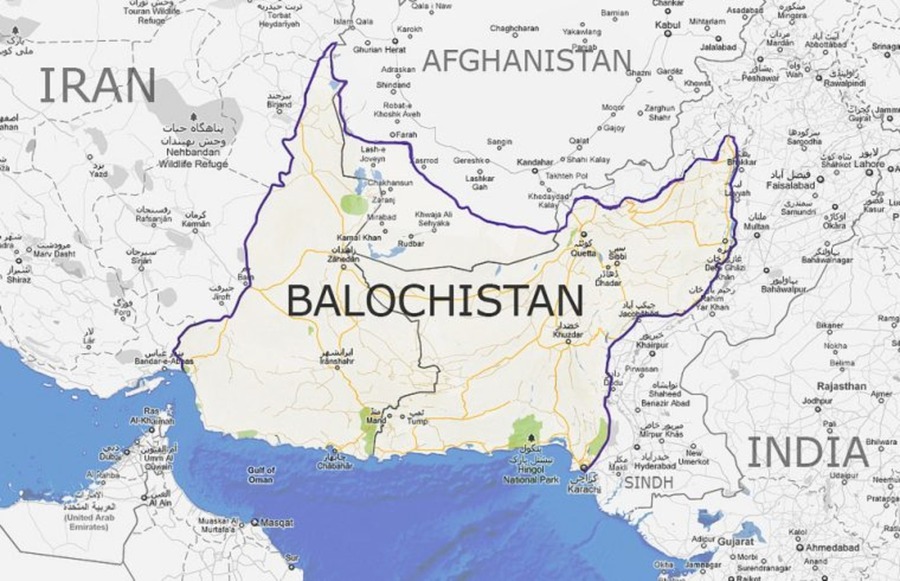
Despite being endowed with vast reserves of oil, coal, gold, copper, lithium, and gas, Balochistan remains Pakistan’s poorest province. It records the country’s highest poverty levels, with a Multidimensional Poverty Index (MPI) of 71.2%, nearly double the national average of 38.8%.
The province’s importance, however, goes far beyond its mineral wealth. It has become a geopolitical hotspot due to the China-Pakistan Economic Corridor (CPEC), a $65 billion USD project under China’s Belt and Road Initiative (BRI). Beijing views CPEC as a crucial link to Middle Eastern, African, and European markets. While projects such as Gwadar Port are promoted as engines of development, Baloch people argue they have brought little benefit to the local population. Instead, they believe the gains largely favour state authorities and bureaucratic elites, leaving the province marginalised despite its strategic and economic importance, fueling feelings of betrayal and strengthening separatist sentiments.
For nearly two decades, Baloch armed groups have waged an insurgency against Pakistani security forces, driven by demands for greater autonomy and control over the province’s rich natural resources. In the last five years, attacks by separatist groups such as the Balochistan Liberation Army (BLA) have increased more than fourfold, reaching 171 incidents in 2024.
The violence has intensified in recent years. In August 2024, at least 73 people were killed when militants launched coordinated assaults on police stations, railway lines, and highways across Balochistan. More recently, in March 2025, BLA fighters hijacked a passenger train, killing at least 10 people. Beyond targeting Pakistani security forces, the BLA has increasingly directed its operations against Chinese interests in the region. Gwadar Port has been a frequent target of militant attacks. Several Chinese nationals working on CPEC projects have been killed.
There is also an Indian angle to this issue. Pakistan has long accused India of fuelling separatist movements in Balochistan. One of the most widely discussed and highly publicised cases in this context was that of Kulbhushan Jadhav, a former Indian Navy officer captured by Pakistan in 2016. Islamabad alleged that he was involved in financing and supporting various separatist groups, including those operating in Balochistan.
In India, discussions on Pakistan’s internal vulnerabilities have occasionally surfaced in strategic and academic circles. In 2014, National Security Advisor Ajit Doval, speaking at a university event, remarked that “Pakistan’s vulnerability is many, many times higher than India’s. You can do one Mumbai; you may lose Balochistan.”
Most recently, in May 2025, Baloch leader Mir Yaar Baloch publicly appealed for India’s support against what he described as Pakistan’s continued repression of the Baloch people.
While India denies any involvement in Baloch separatism, a destabilised Pakistan could trigger spillover effects, leading to increased cross-border instability along India’s border regions and further worsening the already strained relations between the two nations.
The United States recently designated the Balochistan Liberation Army (BLA) as a “foreign terrorist organisation.” This move comes as U.S. President Donald Trump has sought to deepen engagement with Pakistan’s government since the beginning of his second term. The strengthening of bilateral ties can be attributed to several factors, including Pakistan’s adoption of cryptocurrency and digital currency reforms aligned with Trump’s broader economic agenda, the U.S. interest in Pakistan’s critical mineral resources, and Pakistan’s repeated nomination of President Trump for the Nobel Peace Prize following his role in mediating the India–Pakistan conflict in May. Amid this growing partnership, Pakistan is seeking to attract U.S. investment through its critical mineral deposits and the proposed $1.2 billion Pasni Port project in Balochistan, a move that could further exacerbate the already high tensions in the region.
Across the diverse geographies discussed above, modern conflicts often originate from local ethnic or cultural fault lines. Yet, these identity-based tensions rarely exist in isolation; they increasingly intersect with economic interests, external alignments, and broader geopolitical rivalries. For many states, such disputes serve as platforms to project dominance over rival regions, consolidate local support, and tighten control over key resources. These actions are often framed as nationalism or cultural resurgence, even though they frequently mask deeper strategic and economic motives.
These conflict-ridden countries, economically dependent yet rich in resources, often align with major powers to strengthen their ties and leverage these relationships when necessary. Major powers, for their part, are unlikely to remain passive observers. Instead, they actively use local disputes to secure resources, reshape trade routes, and expand their influence. This is especially evident in the Trumpian era, where trade is seen not only as a tool for building alliances but also as a means of pressuring adversaries. In such a situation, where strategic interests often outweigh genuine peace efforts, it’s worth asking: can conflict resolution really stay focused on long-term peace, or will it end up serving the political interests of major powers at that time?
The table below summarises the conflicts mentioned above, along with the rest of the eight disputes that Trump claims to have resolved
|
Conflict/ Region |
Why Foreign Powers Are Interested (Resources, Geography, Strategy) |
Core Cause of Conflict |
How the U.S. Intervened |
|
Armenia–Azerbaijan (South Caucasus) |
Strategic Europe–Asia corridor; key energy pipelines; located in the Russia–Turkey–Iran influence zone. |
Historical grievances; ethno-territorial dispute; control over strategic corridors. |
Brokered a three-way peace deal; secured rights to the “Trump Route for International Peace and Prosperity”; signed tech, trade, and energy agreements; expanded U.S. presence near Russia–Iran. |
|
DRC–Rwanda (Central Africa) |
World’s richest cobalt & coltan reserves (used in EV batteries); major gold deposits; China–U.S. competition for mineral dominance; strategic Central African location. |
Ethnic tensions (Hutu–Tutsi); resource competition; post-genocide spillover; active insurgent groups. |
Mediated a peace agreement; secured cobalt and mineral access; countered China’s mining dominance; expanded U.S. mineral footprint in Africa. |
|
Thailand–Cambodia Border Dispute (Southeast Asia) |
Symbolic temples that attract tourism; both countries are major exporters to the U.S.; region where China is expanding influence through BRI. |
Historical border dispute; nationalism; domestic political tensions. |
Threatened 36% tariffs to force a ceasefire; reduced tariffs after compliance; countered China’s rising influence in Cambodia. |
|
Egypt–Ethiopia (GERD Dispute) |
Nile basin stability crucial for North and East Africa; the Grand Ethiopian Renaissance Dam (GERD) affects regional water balance; Egypt is a long-term U.S. partner and a major non-NATO ally. |
GERD may reduce Egypt’s water flow; long-standing fears over Nile water security. |
Acknowledged Egypt’s concerns; promised mediation between Egypt, Ethiopia, and Sudan. |
|
Serbia–Kosovo (Balkans) |
Balkan stability affects broader European security; strategic location between Europe and Asia; the U.S. is a major trading partner for Serbia. |
Kosovo declared independence in 2008; Serbia (Christian-majority) does not recognise Kosovo (Muslim-majority). |
Washington Agreements (2020) on economic normalisation; increased bilateral trade with the U.S.; tensions continue. |
|
Israel–Iran (Middle-East) |
Israel is a major U.S. ally; region critical for global energy and security; U.S. aims to contain growing Iranian influence. |
Iran’s nuclear programme; proxy conflicts via Hezbollah, Houthis, and Hamas; long-term geopolitical rivalry. |
U.S. carried out strikes on three Iranian nuclear sites. |
|
Israel–Palestine (Middle-East) |
U.S.–Israel defence and economic partnership; Middle East stability; Iran counters U.S.–Israel influence through Palestinian groups. |
Religious and territorial conflict; 2023 Hamas attack killed 1,200 Israelis; Israeli counterattack killed over 69,000 Palestinians. |
U.S. negotiated a ceasefire; facilitated hostage releases; proposed a roadmap for a future Palestinian state. |
|
India–Pakistan (South Asia) |
U.S. has trade ties with both; nuclear stability in South Asia is strategically important for the U.S. |
Long-standing Kashmir dispute; terror attack in J&K killed 26 tourists; India launched airstrikes on alleged terror camps in Pakistan. |
U.S. claimed it mediated a ceasefire between the two nations. |
|
Balochistan Insurgency (South Asia) |
Rich in natural gas, copper, gold, and minerals; Gwadar Port is critical for Indian Ocean trade and China’s BRI; strategic location between Iran, Afghanistan, and the Arabian Sea. |
Ethnic marginalisation; demand for autonomy; disputes over resource control; backlash to CPEC; political repression. |
Declared the BLA a foreign terrorist organisation; strengthened Pakistan’s port and economic ties. |

